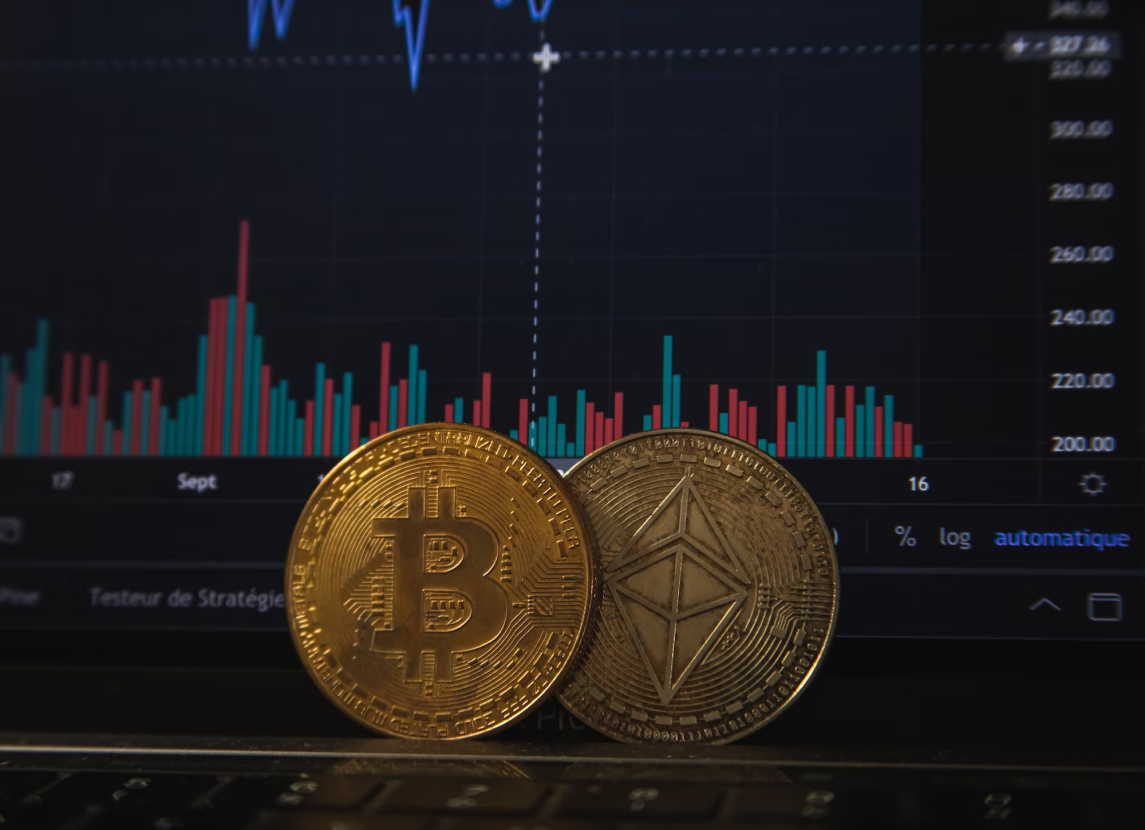Asia has the highest adoption rate of stablecoins worldwide. At Circle Forum Singapore, we explored how APAC is embracing onchain finance, with $2.4 trillion of activity from June 2024 to June 2025. Yam Ki Chan, VP for APAC and Managing Director for Circle Singapore, expands on
Stablecoin transactions hit $2.4 trillion as Asia drives adoption

Share:

Stablecoins are fast becoming a core pillar of digital finance, with Asia-Pacific now emerging as a global leader in adoption.
At the Circle Forum in Singapore, Yam Ki Chan, Circle’s Asia-Pacific Vice President, revealed that on-chain stablecoin activity reached $2.4 trillion in the 12 months to June 2025.
The data highlights how quickly stablecoins are moving beyond niche crypto use and into mainstream financial and commercial systems.
Monthly transactions have soared, businesses across industries are integrating them, and regulators in Asia, the US, and even China are shaping policies that could redefine global money flows.
Singapore and Hong Kong drive stablecoin activity
Singapore and Hong Kong have become the second and third-largest stablecoin markets worldwide, behind only the US. The Singapore-China route has also grown into the busiest corridor for cross-border digital currency transactions, underscoring Singapore’s importance in regional flows.
Circle strengthened its Asia presence with the opening of a Singapore office in May 2025. At the launch, Sopnendu Mohanty, Chief FinTech Officer at the Monetary Authority of Singapore, noted the rising demand for new forms of money, including privately issued stablecoins.
Data shows the scale of this rise. Monthly corporate transactions jumped from less than $100 million in early 2023 to more than $3 billion by early 2025. Sectors like travel and luxury retail are already incorporating stablecoins into daily operations.
Singapore’s Wetrip travel agency, Capella Hotels, and luxury reseller Ginza Xiaoma, known for Birkin bags, now accept payments in stablecoins, reflecting consumer adoption alongside institutional use.
Retail payments and regulation boost growth
Stablecoins are digital assets designed to mirror the value of fiat currencies or commodities like gold, reducing volatility compared with cryptocurrencies such as Bitcoin or Ethereum.
Their ability to settle cross-border payments quickly and at lower costs has made them attractive for trade, retail, and financial services.
Singapore’s consumer-facing use cases are a visible sign of this shift, with stablecoins now being used for booking travel, paying for accommodation, and purchasing high-end goods.
Policymakers have responded with frameworks aimed at managing risk while supporting innovation.
In August 2025, Hong Kong introduced a dedicated regulatory framework for stablecoins. In June, the US passed the GENIUS Act, establishing rules for issuance and oversight.
Meanwhile, China, long restrictive on crypto trading, has taken small steps toward blockchain exploration. Shanghai launched a task force in July 2025 to examine how blockchain could aid international trade, signalling gradual policy flexibility.
Global supply rises as integration deepens
The global supply of circulating stablecoins reached an average of $225 billion by May 2025, marking a 63% increase compared to the year before. Monthly transaction volumes climbed to $625 billion, showing how deeply these digital assets are being integrated into finance.
This expansion is tied not only to retail and institutional demand but also to clearer regulations across jurisdictions. The combination of large trading volumes and growing acceptance by businesses demonstrates that stablecoins are no longer confined to crypto exchanges or speculative trading. Instead, they are increasingly embedded in mainstream commercial activity.
Asia-Pacific at the centre of digital money
For Circle, Asia-Pacific is more than a growth market. The company views the region as a testing ground for the global transition to digital financial systems. Regulatory clarity and adoption in countries like Singapore and Hong Kong have created fertile ground for expansion.
With $2.4 trillion in transactions, rising retail payments, and major policy developments across Asia, the region is now seen as a bellwether for the future of money. Stablecoins are being positioned not only as tools for crypto users but also as infrastructure for global finance, trade, and commerce.
The post Stablecoin transactions hit $2.4 trillion as Asia drives adoption appeared first on Invezz
Stablecoin transactions hit $2.4 trillion as Asia drives adoption

Share:

Stablecoins are fast becoming a core pillar of digital finance, with Asia-Pacific now emerging as a global leader in adoption.
At the Circle Forum in Singapore, Yam Ki Chan, Circle’s Asia-Pacific Vice President, revealed that on-chain stablecoin activity reached $2.4 trillion in the 12 months to June 2025.
The data highlights how quickly stablecoins are moving beyond niche crypto use and into mainstream financial and commercial systems.
Asia has the highest adoption rate of stablecoins worldwide. At Circle Forum Singapore, we explored how APAC is embracing onchain finance, with $2.4 trillion of activity from June 2024 to June 2025. Yam Ki Chan, VP for APAC and Managing Director for Circle Singapore, expands on
Monthly transactions have soared, businesses across industries are integrating them, and regulators in Asia, the US, and even China are shaping policies that could redefine global money flows.
Singapore and Hong Kong drive stablecoin activity
Singapore and Hong Kong have become the second and third-largest stablecoin markets worldwide, behind only the US. The Singapore-China route has also grown into the busiest corridor for cross-border digital currency transactions, underscoring Singapore’s importance in regional flows.
Circle strengthened its Asia presence with the opening of a Singapore office in May 2025. At the launch, Sopnendu Mohanty, Chief FinTech Officer at the Monetary Authority of Singapore, noted the rising demand for new forms of money, including privately issued stablecoins.
Data shows the scale of this rise. Monthly corporate transactions jumped from less than $100 million in early 2023 to more than $3 billion by early 2025. Sectors like travel and luxury retail are already incorporating stablecoins into daily operations.
Singapore’s Wetrip travel agency, Capella Hotels, and luxury reseller Ginza Xiaoma, known for Birkin bags, now accept payments in stablecoins, reflecting consumer adoption alongside institutional use.
Retail payments and regulation boost growth
Stablecoins are digital assets designed to mirror the value of fiat currencies or commodities like gold, reducing volatility compared with cryptocurrencies such as Bitcoin or Ethereum.
Their ability to settle cross-border payments quickly and at lower costs has made them attractive for trade, retail, and financial services.
Singapore’s consumer-facing use cases are a visible sign of this shift, with stablecoins now being used for booking travel, paying for accommodation, and purchasing high-end goods.
Policymakers have responded with frameworks aimed at managing risk while supporting innovation.
In August 2025, Hong Kong introduced a dedicated regulatory framework for stablecoins. In June, the US passed the GENIUS Act, establishing rules for issuance and oversight.
Meanwhile, China, long restrictive on crypto trading, has taken small steps toward blockchain exploration. Shanghai launched a task force in July 2025 to examine how blockchain could aid international trade, signalling gradual policy flexibility.
Global supply rises as integration deepens
The global supply of circulating stablecoins reached an average of $225 billion by May 2025, marking a 63% increase compared to the year before. Monthly transaction volumes climbed to $625 billion, showing how deeply these digital assets are being integrated into finance.
This expansion is tied not only to retail and institutional demand but also to clearer regulations across jurisdictions. The combination of large trading volumes and growing acceptance by businesses demonstrates that stablecoins are no longer confined to crypto exchanges or speculative trading. Instead, they are increasingly embedded in mainstream commercial activity.
Asia-Pacific at the centre of digital money
For Circle, Asia-Pacific is more than a growth market. The company views the region as a testing ground for the global transition to digital financial systems. Regulatory clarity and adoption in countries like Singapore and Hong Kong have created fertile ground for expansion.
With $2.4 trillion in transactions, rising retail payments, and major policy developments across Asia, the region is now seen as a bellwether for the future of money. Stablecoins are being positioned not only as tools for crypto users but also as infrastructure for global finance, trade, and commerce.
The post Stablecoin transactions hit $2.4 trillion as Asia drives adoption appeared first on Invezz











